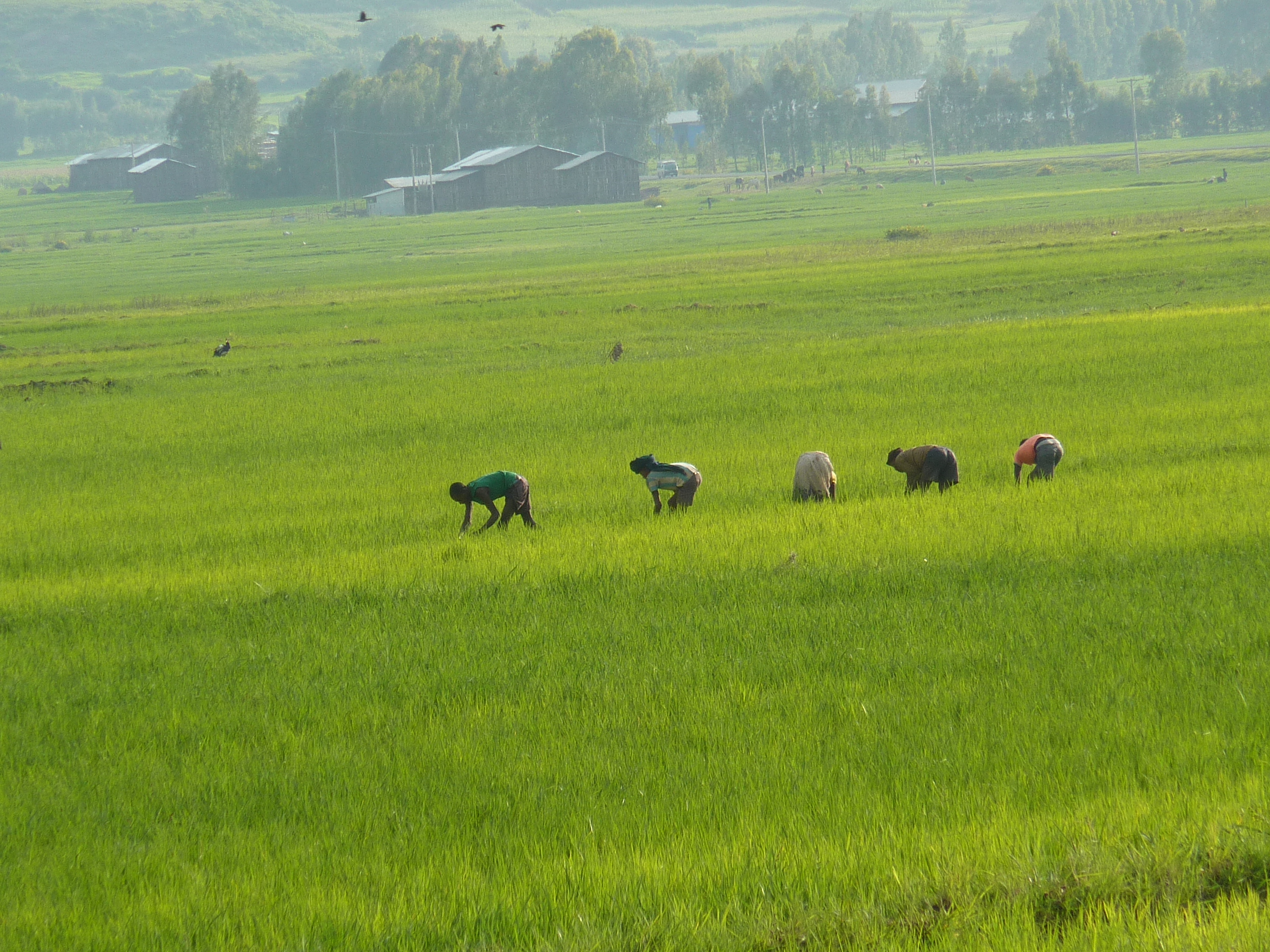Hired labour use, productivity, and commercialisation: the case of rice in the Fogera Plain of Ethiopia

Written by: Dawit Alemu
Rice production is labour intensive with critical peak periods, which forces smallholder rice farmers to use hired labour in addition to family labour. Thus, we have seen the emergence of a rural labour market. This blog presents a summary of APRA Working Paper 83, which explores the characteristics of rural labour markets, trends in hired labour use and the impact of hired labour on smallholder farmers’ rice productivity and commercialisation.
Rural labour market and hired labour use in the Fogera Plain
With the expansion of rice production in Ethiopia’s Fogera Plain, the rural labour market, highly characterised by the casual unskilled labour supply, has flourished. This is mainly associated with the nature of rice production, where certain agronomic practices demand a significant investment of time and thus family labour may not be sufficient. This has created an opportunity for rice farmers to hire labour when they need for extra help, and also for unskilled labourers to gain casual employment. The overall characteristics of the emerging labour market show that it operates in a very traditional manner, without an information system to proactively balance demand with supply. Labourers also highlighted the lack of dispute settlement mechanisms, mainly in relation to the prevalent payment disputes between farmers and labours to which there are no resolution pathways.
Our results indicate that in Fogera Plain, 52.4 per cent of smallholder rice farmers use hired labour in the course of rice production. The size of the rural labour market in the region is associated with the total number of rice producers in the Fogera Plain, and the distribution of size of the amount of land allocated for rice. Though there is a debate about the limitation of available data on the size of land allocated for rice in the country and in Fogera Plain, it is estimated that there are close to 124,000 farm households, allocating about 50,000 ha of land annually for rice in the three districts of Fogera, Libo Kemkem and Dera.

Rice productivity and commercialisation
In terms of rice productivity, the mean difference test indicates that, on average, users of hired labour achieved a better yield compared to those who do not use hired labour, where the average rice yield achieved by users of hired labour was 11 per cent higher than for non-users. However, both users (4.05t/ha) and non-users (3.61t/ha) of hired labour achieved higher yields compared to the national average, which is estimated at 2.84t/ha, as a result of the high rice productivity rates in the Fogera Plain compared to the rest of the country. Similarly, users of hired labour were on average more commercial compared to non-users, with a rice commercialisation index (RCI) 3 per cent higher compared to non-users. In other words, those who hire labour sell 3 per cent more of their total production than non-users of hired labour, on average. The overall RCI is estimated at 32 per cent, implying that on average rice farmers in the Fogera Plain sell 32 per cent of their total production.
Impact of hired labour use on productivity and commercialisation
In terms of the estimated impact of hired labour on smallholder farmers’ rice productivity, the key results indicate that:
- On average, rice productivity would have been lower by 0.4t/ha for users of hired labour if they had not applied hired labour.
- Rice productivity would have been increased by, on average, 0.33t/ha for non-users of hired labour if they had applied hired labour in their production processes.
- Timely accomplishment of farm operations, from land preparation through to threshing, is crucial for improving productivity and the quality of production. Hired labour use was highly associated with timely application of productivity-enhancing inputs like fertiliser, and thus played a significant role in improving productivity.
In terms of estimated impact of hired labour use on rice commercialisation, the results indicate:
- On average, the RCI was higher by 0.02 units for users of hired labour, compared to their non-user counterparts.
- The RCI would have been increased by, on average, 0.06 units for non-users of hired labour if they apply hired labour in their production processes.
Conclusion
The implications of this empirical evidence indicates that: hired labour contributes significantly to the enhancement of productivity and commercialisation of rice; and that the labour market contributes to the creation of employment opportunities for rural youth through the development of the rural labour market. However, there is a need to further enhance the development of the labour market so that the mismatch between supply and demand is reduced, which can be done through the introduction of a labour market information system, formalisation of market relations, and the creation of localised dispute settlement mechanisms between labourers and farmers mainly in relation to payments following the accomplishment of the farm operations.
